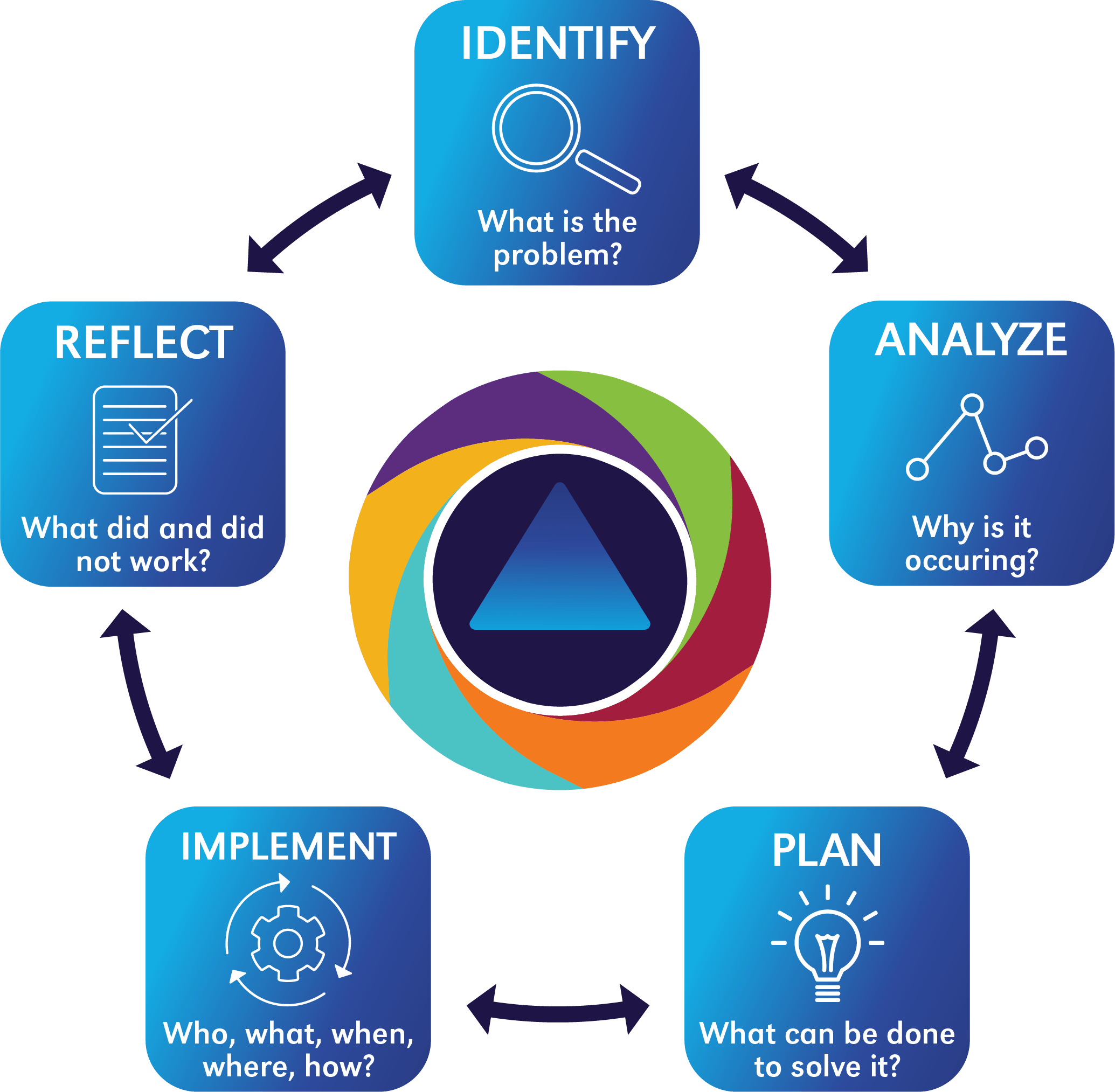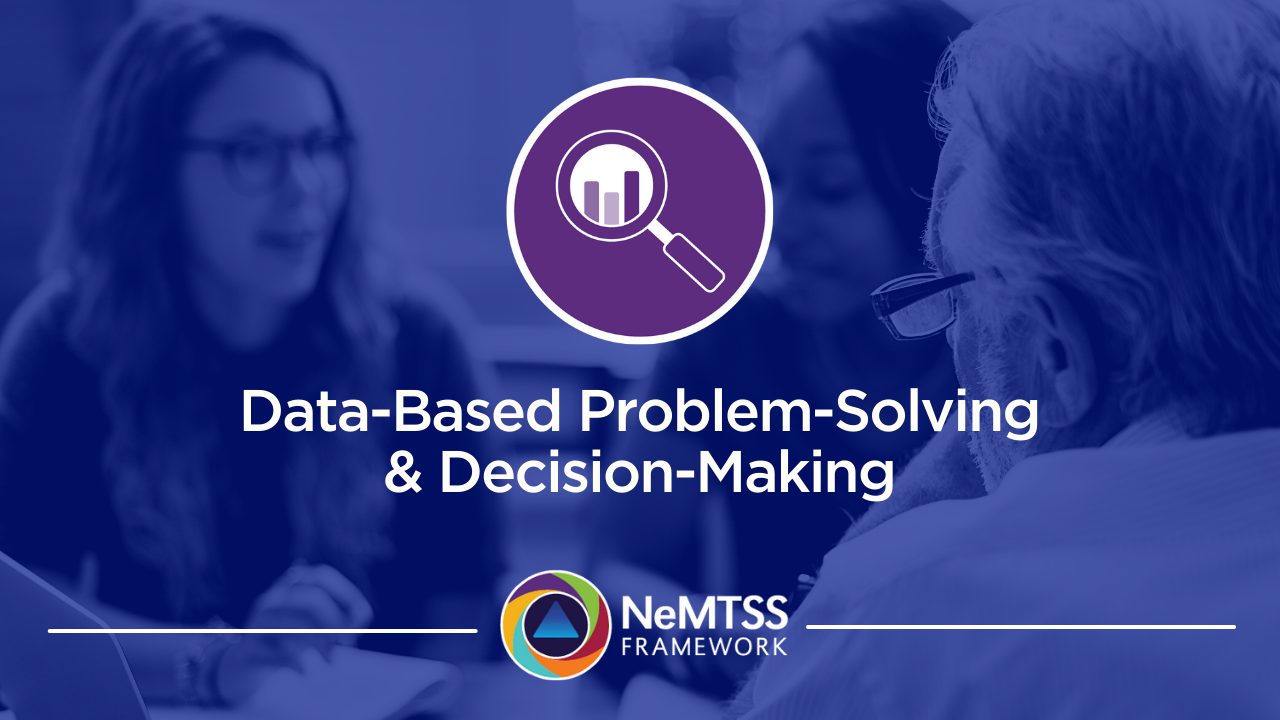Essential Element | Data-Based Problem-Solving & Decision-Making
Welcome to the final installment of our six-part blog series on the Essential Elements in NeMTSS.
The Essential Elements are one of the first things new districts learn about during Systems Training. They are encouraged to think about how each element plays a part in their district currently and how each element will help them be successful with NeMTSS in the future. Each element is equally important to the process.
The NeMTSS Essential Elements are:
- Shared Leadership
- Communication, Collaboration & Partnerships
- Evidence-Based Practices: Curriculum, Instruction, Intervention & Assessment
- Building Capacity & Infrastructure for Implementation
- Layered Continuum of Supports
- Data-Based Problem-Solving & Decision-Making
In this post, we will be talking about Data-Based Problem-Solving & Decision-Making.
Data-Based Problem-Solving & Decision-Making
We don’t mean problem-solving like a page of word problems in math. We mean problem-solving by getting together with a team and looking at a problem systematically and methodically.
Examples of problems NeMTSS can help schools address may be:
- Why are more students late to second period than third period?
- Why does Class A always score lower than Class B on the same tests?
- Why did this student’s behavior change suddenly?

NeMTSS uses a four-step problem-solving model:
1. Identify the problem.
2. Gather and analyze data about the problem.
3. Decide on and implement a support to correct the problem.
4. Reflect on the outcome and evaluate what is working.
Sometimes this process must be repeated, especially if a support was unsuccessful.
Data and collecting information are crucial to the problem-solving model because they can help identify the root cause of a problem so it can be addressed, instead of just the outside symptoms.
For example, in the scenario about more students being late to second period than third period, it may be because the announcements are shared during first period and they run late, and then teachers run late trying to finish class on time. A possible solution might be to lengthen first period to account for the time announcements take. If a school just focused on students being late, and then tried ways to get the students to move faster in the hall or increased penalties for being late, the school would have looked at the symptom and not the cause.
Why is Data-Based Problem-Solving & Decision-Making essential to NeMTSS?
Data-Based Problem-Solving and Decision-Making is an Essential Element of NeMTSS because the problem-solving model is a universal process that can be used throughout education. During Systems Training, school districts learn about the method and are encouraged to use it in a situation in their school. Whenever schools are faced with a decision that needs to be made, they are encouraged to use the problem-solving model to apply consistent reasoning throughout their district.
Data-Based Problem-Solving and Decision-Making is connected to Shared Leadership because the problem-solving meetings should include a diverse group of people who are involved with or impacted by the problem. All staff share in the decision-making process so that the leadership and responsibility is shared. It is also related to Evidence-Based Practices because decision-makers should use evidence-based practices when selecting what support or intervention to use to help correct the problem.
Visit our web page on Data-Based Problem-Solving and Decision-Making to learn more. You can also read the other posts in our series exploring Shared Leadership; Communication, Collaboration & Partnership; Evidence-Based Practices: Curriculum, Instruction, Intervention & Assessment; Building Capacity & Infrastructure for Implementation; and Layered Continuum of Supports.
Thank you for taking time to learn more about the six Essential Elements with us!



